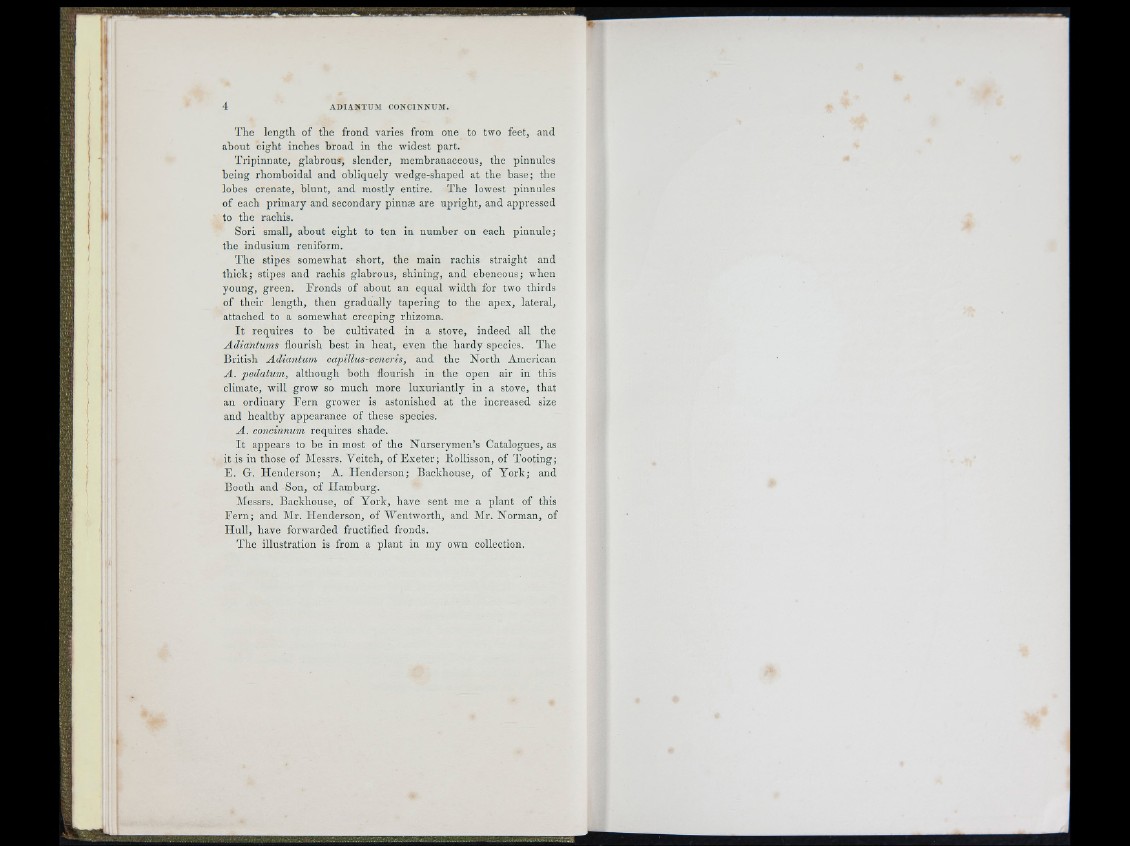
(
T h e length of the frond varies from one to two feet, and
about eight inches b ro ad in the widest part.
T rip in n a te , glabrous, slender, membranaceous, the pinnules
being rhomboidal and obliquely wedge-shaped at the base; the
lobes crcnate, b lu n t, and mostly entire. The lowest pinnules
of each prima ry and secondary pinme are u p rig h t, and appressed
to the rachis.
Sori small, about eight to ten in number on each p in n u le ;
the indusium reniform.
T he stipes somewhat short, the main rachis stra ig h t and
th ic k ; stipes and rachis glabrous, shining, and ebeneous; when
y ou n g , green. F ro n d s of about an equal width for two thirds
o f th e ir len g th , then g rad u a lly tap e rin g to the apex, lateral,
attached to a somewhat creeping rhizoma.
I t req u ire s to be cultivated in a stove, indeed all the
A d ia n tum s flourish best in h e a t, even the h a rd y species. The
B ritish A d ia n tum capillus-veneris, and the N o rth American
A . p ed a tum , although b o th flourish in the open air in this
climate, will grow so much more lu x u ria n tly in a stove, th a t
an ordinary F e rn grower is astonished at th e increased size
and he a lth y appearance of these species.
A . concinnum requ ire s shade.
I t appears to be in most of the N u rse rym en ’s Catalogues, as
it is in those of Messrs. Veitch, of E x e te r; Kollisson, of T ooting;
E . G. H en d e rso n ; A. H en d e rso n ; Backhouse, of Y o rk ; and
Booth and Son, of Ham b u rg .
Messrs. Backhouse, of Y o rk , have sent me a plan t of this
F e rn ; and Mr. H en derson, of lYcntworth, and Mr. Norman, of
H u ll, have forwarded fructified fronds.
T h e illustration is from a p lan t in my own collection.